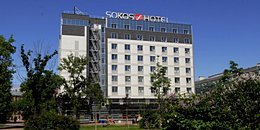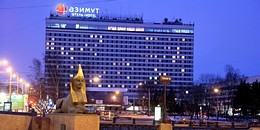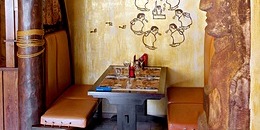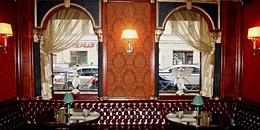Church of the Resurrection of Christ by Varshavsky Station
This magnificent red-brick, Russian Revival church stands next to Varshavsky Station (now an entertainment and shopping centre) among the sadly neglected factories and warehouses along the Obvodny Canal. Built between 1904 and 1908, when the area was the heart of St. Petersburg's heavy industry, surrounded by proletarian slums, the church was the center of the city's Temperance Movement - "The All-Russian Alexander Nevsky Society of Sobriety".
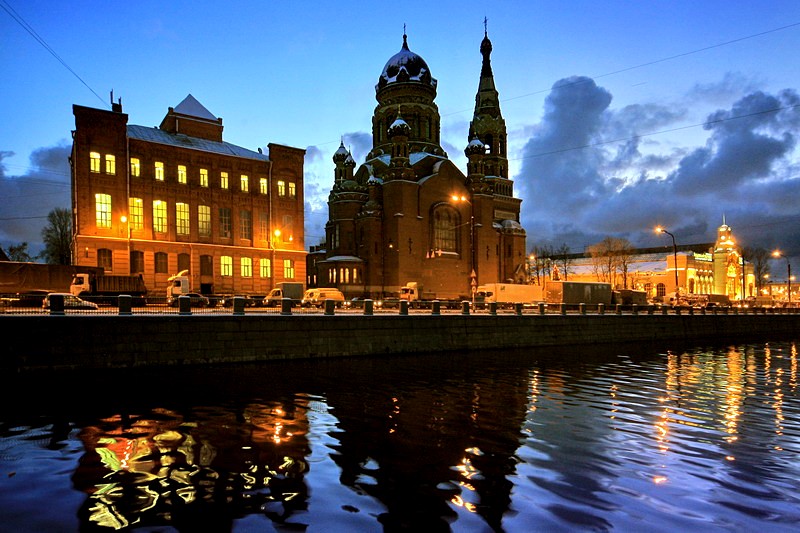
Whether the church was paid for from the coffers of the Society, or from a special Imperial tax on drinking houses of one kopek for every thousand taken, remains uncertain, but its construction was a major undertaking, involving three of St. Petersburg's most prominent architects and designers - Andrei Gun, German Grimm and Gustav Goli. The result was one of the city's finest modern churches, its traditional form comprising a large single cupola with four much smaller domes, all of a deep sea green that contrasts beautifully with the churches red-brick walls, and a splendid, multi-layered belltower.
Inside, the church was unusual for its lack of interior ornament and its use of reinforced-concrete arches to support the central cupola, doing away with the need for columns along the nave, and thus maximizing the space available for worshippers. The aim was to fill the church with workers from the surrounding slums, and the main attraction was an icon of the Resurrection of Christ, presented to the Society of Sobriety by Damian, Patriarch of Jerusalem. Before the Revolution, the Church of the Resurrection attracted up to one million supplicants a year, and the Society could count its work a success. Used as a warehouse in the Soviet period, the building was returned to the Orthodox Church during Perestroika, and has been fully restored.
Address: 116, Naberezhnaya Obvodnogo Kanala
Metro station: Baltiyskaya
From the metro: Exit the station, cross the square to the canal, and walk right along the embankment about 200m to Varshavskaya Ploshchad. The church is clearly visible beyond the old station building. (7 minutes)
Opening hours: Daily from 9am to 7pm (from 7am to 7pm on Sundays).
For those who can spare the time, the area around Baltisky and Varshavsky Stations along the Obvodny Canal is the ideal place to get a taste of St. Petersburg's industrial heritage, with numerous impressive but sadly neglected treasures of industrial architecture. The Church of the Resurrection played an important role in the district's history, and a short detour for those taking suburban trains or minibuses to the Imperial Palaces at Peterhof, Orenienbaum or Gatchina from Baltisky Station is well worth the effort to see this impressive building. The church is fully functioning, and continues its mission to promote temperance in what is still one of St. Petersburg's most impoverished districts. Particular attention is paid to the Orthodox St. Boniface, who gave himself to martyrdom in repentance for his drunken life during the reign of Emperor Diocletian. His holiday is marked, appropriately, on 1 January.

